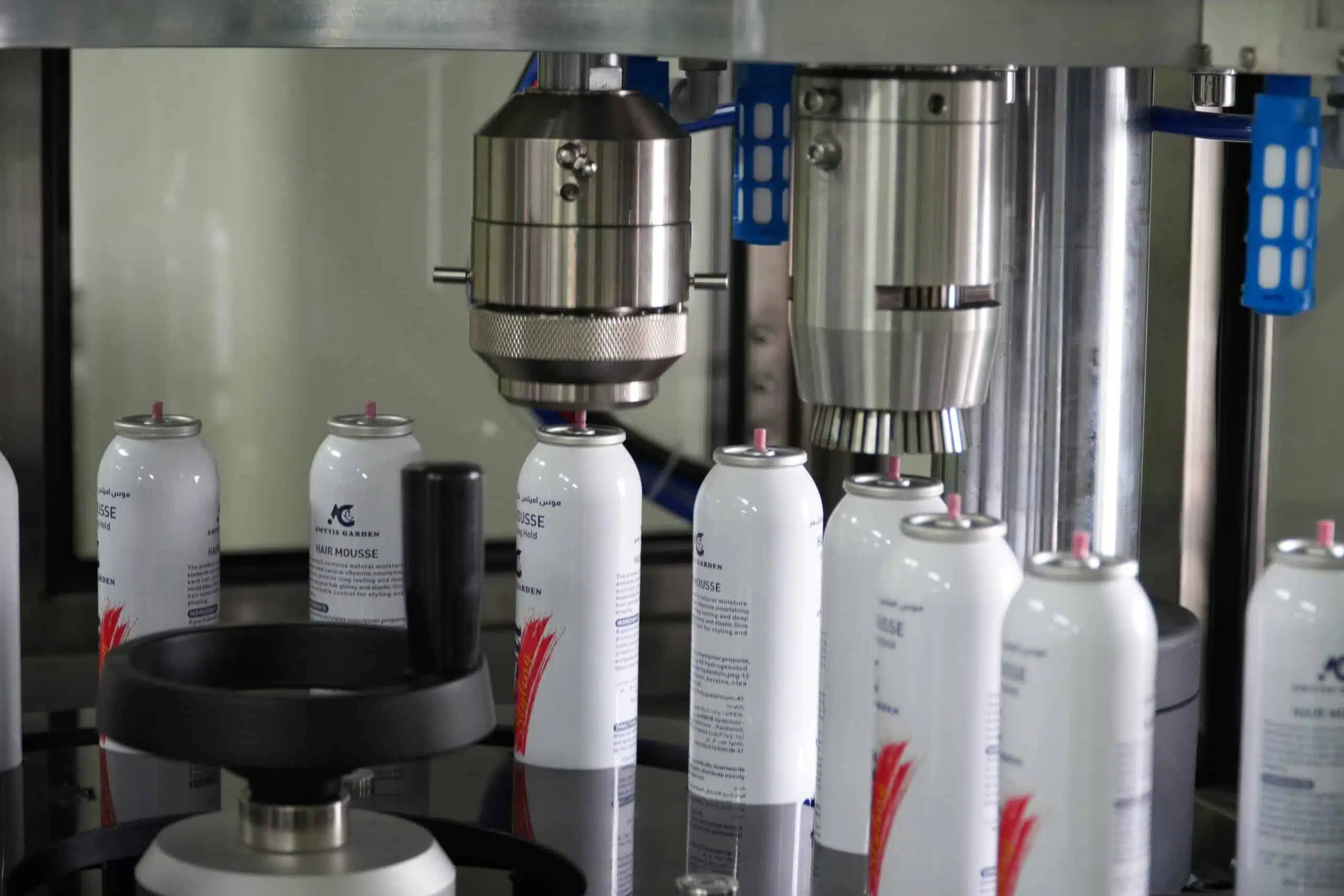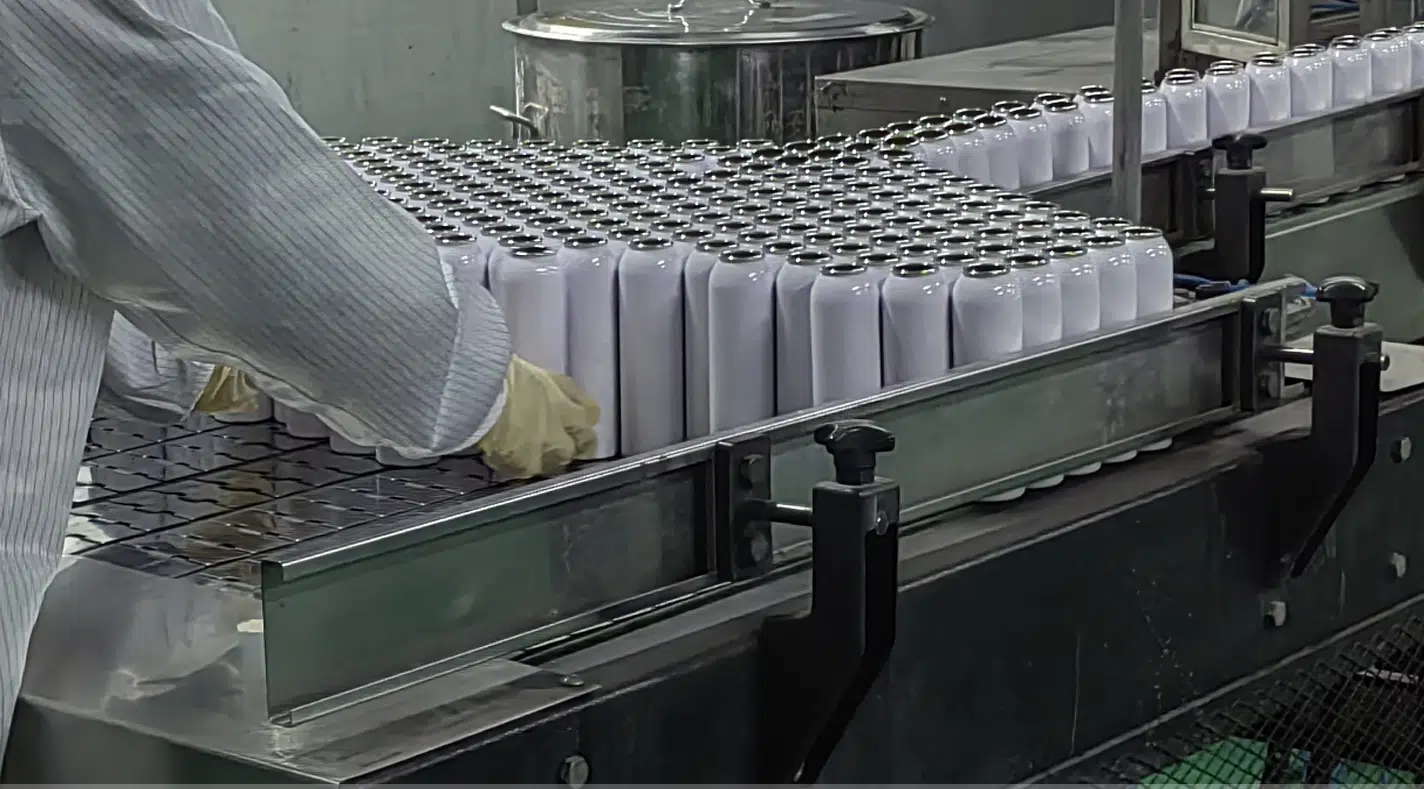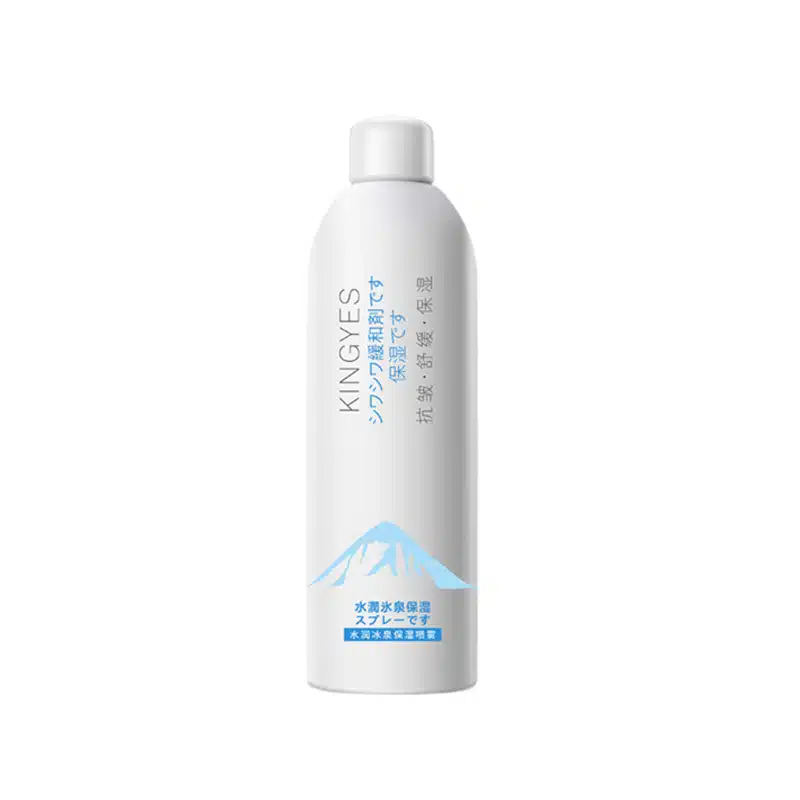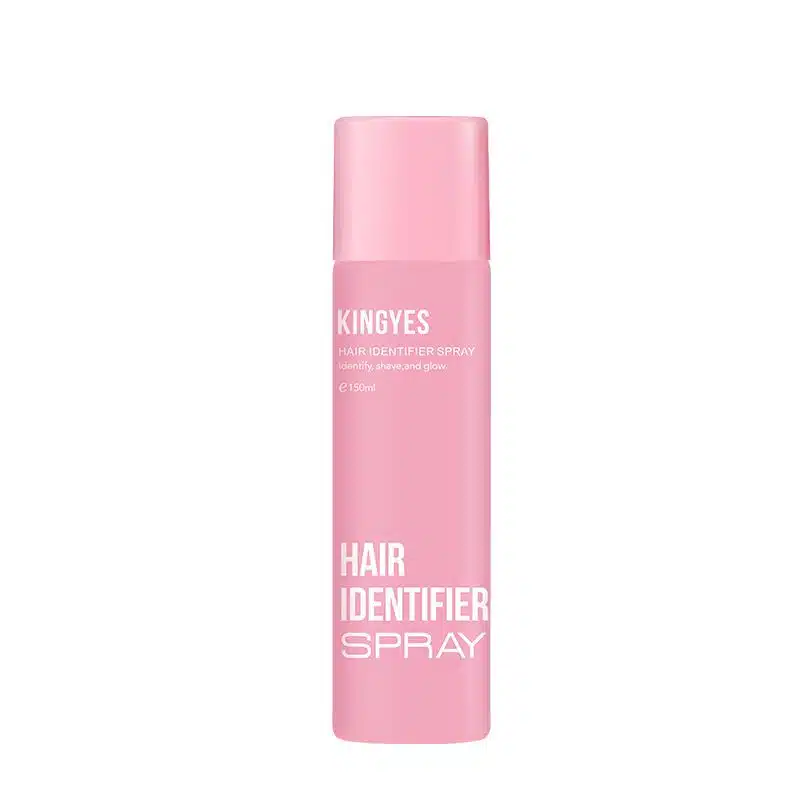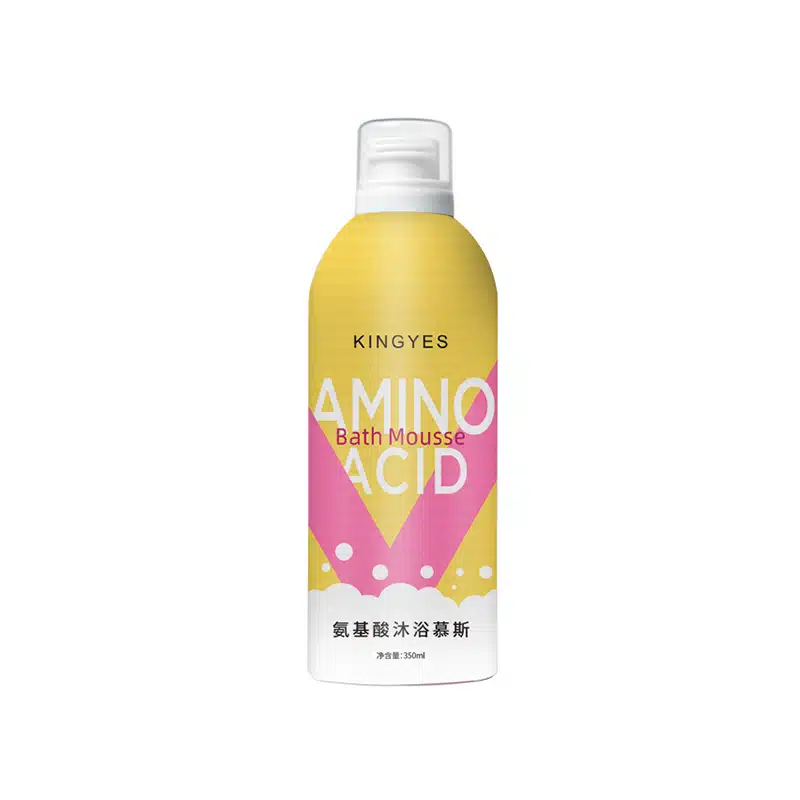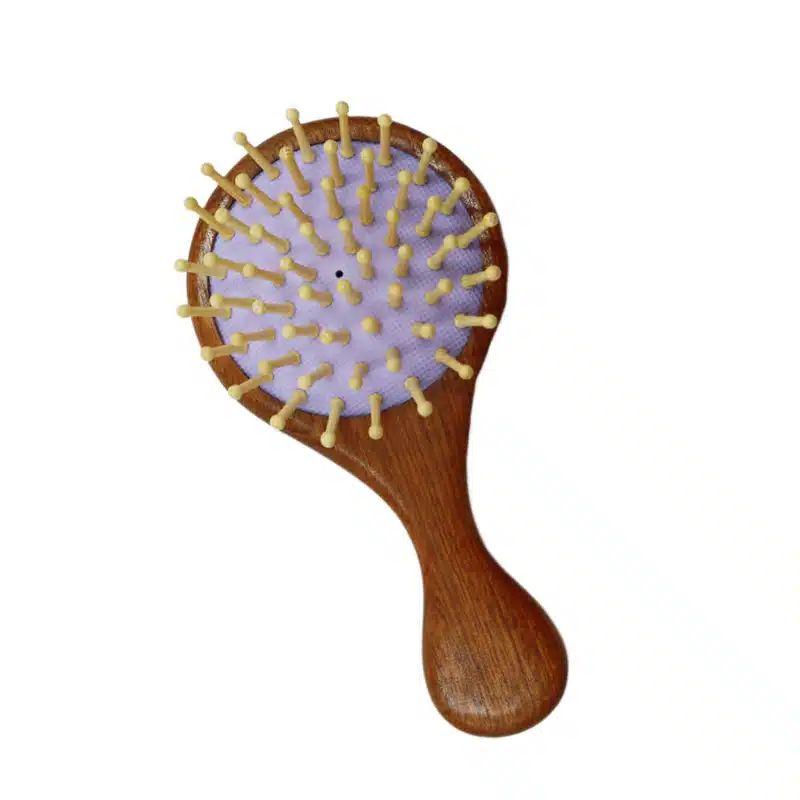
Was ist der Prozess der Aerosolherstellung?
Inhaltsübersicht
Entmystifizierung von Aerosolen: Was ist der Prozess der Aerosolherstellung?
Haben Sie sich jemals gefragt, wie das Spray von Deodorant, Haarspray oder Farbe aus der Dose überall hinkommt? Die Antwort liegt in der faszinierenden Welt der Aerosolherstellung. Dieser Prozess verwandelt Flüssigkeiten und Feststoffe in einen feinen Nebel oder SprayDadurch lassen sie sich leicht auftragen und verteilen. Dieser umfassende Leitfaden schlüsselt die Aerosolherstellung Schritt für Schritt, von den Komponenten eines Aerosolsystem zu den verschiedenen Herstellungsmethoden. Wir werden die Rolle der Treibstoffedie Bedeutung der Ventilund wie die verschiedenen Faktoren die Endprodukt.
Was genau ist ein Aerosol? Die Wissenschaft definieren
Eine Aerosol ist eine Suspension aus feinen festen Teilchen oder Flüssigkeit Tröpfchen in einem Gas. Stellen Sie sich das wie eine kleine Wolke in einer Dose vor. Aerosole umfassen viele gängige Haushaltsgegenstände. Diese Partikel oder Tröpfchen sind in der Regel sehr klein, oft weniger als 100 Mikrometer (µm) groß - kleiner als die Breite eines menschlichen Haares. Die Gas fungiert als Träger, so dass die Partikel verstreuend gleichmäßig und effizient. Beispiele sind: Haarspray, Deodorant, Kochen Spray, Farbe und Insektizide.
Aerosole sind nicht nur auf Produkte in Dosen beschränkt. Sie kommen auch natürlich in der Umwelt vor, z. B. als Nebel, Dunst, Staub und Geysir-Dampf. Aerosolbildung kann sowohl durch natürliche Prozesse als auch durch menschliche Aktivitäten. Menschliche Quellen von Aerosole Dazu gehören Industrieemissionen, Fahrzeugabgase und landwirtschaftliche Praktiken. Diese Partikel eine wichtige Rolle spielen in Das Klima der ErdeSie beeinflussen die Wolkenbildung und die Menge des Sonnenlichts, das die Oberfläche erreicht.
Schlüsselkomponenten eines Aerosol-System
Eine Aerosolsystem, typischerweise zu finden in Aerosoldosenbesteht aus mehreren Schlüsselkomponenten, die zusammenwirken, um eine ausgeben. die Spray:
- Die Aerosol-Behälter: Dabei handelt es sich in der Regel um eine Metalldose (Aluminium oder verzinnter Stahl), die so konzipiert ist, dass sie dem Innendruck standhält. Form und Größe des Behälters variieren je nach Produkt und Verwendungszweck.
- Das Produkt Konzentrat: Dies ist der Wirkstoff, den Sie ausgeben.wie z. B. Farbe, Haarspray oder Insektizide. Es kann sich um eine Flüssigkeit, einen in einer Flüssigkeit suspendierten Feststoff oder ein Pulver handeln. Das Konzentrat bestimmt die Struktur der Verbindung.
- Die Treibstoff: Dies ist eine Gas die den Druck erzeugt, der erforderlich ist, um vertreiben. das Produktkonzentrat aus der Dose. Treibstoffe kann sein Flüssiggastreibstoffe oder komprimierte Gase. Mehr dazu im nächsten Abschnitt.
- Die Lösungsmittel: A Lösungsmittel wird häufig verwendet, um das Produktkonzentrat aufzulösen und sicherzustellen, dass es sich richtig mit dem Produkt vermischt. Treibstoff. Die Art der Lösungsmittel verwendet wird, hängt von der Löslichkeit und Viskosität des Produktkonzentrats.
- Die Ventil und Aktuator: Dies ist der Mechanismus, der die Freisetzung des Produkts steuert. Die Ventil ist ein kleines, kompliziertes Gerät, das sich öffnet und schließt, um den Durchfluss zu regulieren, während der Antrieb ist die Taste oder Düse, die Sie drücken, um die Spray. Eine der wichtigsten Komponenten ist die Ventil.
Diese Komponenten arbeiten harmonisch zusammen, um eine kontrollierte und konsistente Spray. Die genaue Formulierung und Gestaltung der einzelnen Komponenten sind entscheidend für die Leistung und Lebensdauer des Produkts.
Die Rolle der Treibstoffe in Aerosol Funktionsweise
Die Treibstoff ist die treibende Kraft hinter einer Aerosolspray. Das ist es, was den Druck erzeugt, der nötig ist, um vertreiben. das Produktkonzentrat aus der Dose und bilden die Spray. Es gibt zwei Haupttypen von Treibstoffe verwendet in Aerosole:
- Verflüssigt Gasförmige Treibstoffe: Dies sind Gase, die unter Druck verflüssigt wurden. Wenn die Ventil geöffnet wird, sinkt der Druck im Inneren der Dose, wodurch die verflüssigte Gas schnell zu verdampfen und sich auszudehnen, wodurch das Produktkonzentrat aus der Dose gedrückt wird. Allgemein Flüssiggastreibstoffe einschließen. Kohlenwasserstoffs wie Propan und Butansowie Dimethylether (DME).
- Komprimiert Gasförmige Treibstoffe: Dies sind Gase, die auch unter Druck in einem gasförmigen Zustand bleiben. Gängige Beispiele sind Kohlendioxid, Stickstoff und Distickstoffoxid. Komprimierte Gase sorgen für einen gleichmäßigeren Druck im gesamten Lebensdauer des Produkts im Vergleich zu verflüssigten Gasen.
Die Wahl der Treibstoff hängt von mehreren Faktoren ab, unter anderem:
- Das Produkt Konzentrat: Die Treibstoff muss mit dem Produktkonzentrat verträglich sein und darf nicht mit ihm chemisch reagieren.
- Gewünscht Spray Merkmale: Anders Treibstoffe produzieren unterschiedliche Spray Muster und Partikelgrößes.
- Umweltvorschriften: Einige Treibstoffewie z. B. Fluorchlorkohlenwasserstoffe (FCKW), wurden wegen ihrer schädlichen Auswirkungen auf die Umwelt schrittweise aus dem Verkehr gezogen. Ozon Ebene.
- Kosten: Die Kosten für die Treibstoff kann ein wesentlicher Faktor für die Gesamtproduktionskosten sein.
Es ist wichtig zu wissen, dass viele Kohlenwasserstofftreibgase sind brennbarDaher ist bei der Handhabung und Lagerung Vorsicht geboten. Aerosoldosen.
Das Verständnis der Ventil und Aktuator: Der Dispenser-Mechanismus
Die Ventil und Antrieb sind wesentliche Bestandteile der Aerosolsystemdie Kontrolle der Freisetzung des Produkts und die Bestimmung der Eigenschaften des Produkts Spray. Ventil und Antrieb zusammenarbeiten. Die Ventil ist ein kleines, präzisionsgefertigtes Gerät, das sich im Inneren der Dose befindet, in der Regel im oberen Bereich. Sie besteht aus mehreren Teilen, darunter:
- Das Ventilgehäuse: Das Hauptgehäuse des Ventil.
- Der Vorbau: Ein kleines, bewegliches Teil zum Öffnen und Schließen des Ventil.
- Die Dichtung: Eine Dichtung, die ein Auslaufen verhindert.
- Der Frühling: Liefert die Kraft zum Schließen der Ventil wenn die Antrieb freigegeben wird.
- Das Dip-Rohr: Ein Rohr, das sich vom Ventil auf den Boden der Dose, so dass das Produktkonzentrat nach oben gesaugt werden kann.
Die Antrieb ist der externe Teil, den der Benutzer drückt, um die Spray. Es ist verbunden mit dem Ventil Vorbau. Wenn Sie die Taste Antriebdrückt er den Stiel nach unten und öffnet die Ventil und die Ermöglichung der Treibstoff und das Produktkonzentrat fließt ab.
Die Gestaltung der Ventil und Antrieb Einflüsse:
- Spray Muster: Die Form und Größe der Spray (z. B. feiner Nebel, grober Spray, Strom).
- Spray Bewerten: Die Produktmenge, die pro Zeiteinheit abgegeben wird.
- Partikelgröße: Die Größe der Tröpfchen oder Partikel in der Spray.
Anders Ventil und Antrieb Designs werden für unterschiedliche Produkte und Anwendungen verwendet. Zum Beispiel, ein feiner Nebel Spray für Haarsprays erfordert eine andere Ventil und Antrieb als eine grobe Spray für Farbe.
Die Aerosol-Produktion Prozess: Ein schrittweiser Leitfaden
Die Aerosolherstellung Prozess, auch bekannt als Industrieproduktionumfasst mehrere sorgfältig kontrollierte Schritte, um sicherzustellen, dass die Endprodukt sicher und wirksam ist und den Qualitätsstandards entspricht. Hier ist eine vereinfachte Übersicht:
Zubereitung des Konzentrats: Das Produktkonzentrat wird durch Mischen der Wirkstoffe mit allen erforderlichen Lösungsmittel, Stabilisatoren oder andere Zusatzstoffe. Dieser Schritt gewährleistet, dass das Konzentrat homogen ist und die gewünschten Eigenschaften aufweist.
Befüllung der Behälter: Die leere Aerosol-Behälter wird mit dem zubereiteten Produktkonzentrat befüllt. Dieses ist in der Regel durchgeführt mit automatische Abfüllmaschinen, die eine genaue und gleichmäßige Abfüllung gewährleisten.
Crimpen von Ventilen: Die Ventil wird in die Öffnung des Behälters eingeführt und fest verschlossen. Dadurch entsteht eine luftdichte Abdichtung, die das Auslaufen des Treibstoff und Produktkonzentrat.
Aufladen des Treibstoffs: Die Treibstoff wird dem Container über die Funktion Ventil. Dies kann auf zwei Arten geschehen:
- Druckbefüllung: Die Treibstoff wird unter Druck hinzugefügt und in den Behälter gepresst.
- Unter-der-Tasse-Füllung (UTC): Die Treibstoff wird dem Container hinzugefügt vor die Ventil gequetscht wird. Diese Methode wird häufig verwendet für Flüssiggastreibstoffe.
Prüfung und Qualitätskontrolle: Schritt 5Neben anderen Schritten werden auch strenge Tests durchgeführt. Die gefüllte Aerosol Dosen werden auf Dichtheit und Korrektheit geprüft Ventil Funktion, Spray Eigenschaften und Druck. Dadurch wird sichergestellt, dass das Produkt den Sicherheits- und Leistungsstandards entspricht.
Platzierung des Aktuators und der Kappe: Die Antrieb und eine Schutzkappe werden auf die Ventil Vorbau.
Kennzeichnung und Verpackung: Die Dosen werden mit dem Produktnamen, den Inhaltsstoffen, der Gebrauchsanweisung und eventuellen Warnhinweisen beschriftet. Anschließend werden sie für den Vertrieb verpackt.
Dieser gesamte Prozess wird in der Regel in einer kontrollierten Umgebung durchgeführt, um Verunreinigungen zu vermeiden und die Produktkonsistenz zu gewährleisten.
Herstellungsmethoden:
Die Aerosol In der Industrie gibt es zwei Hauptmethoden zur Befüllung von Aerosolbehältern, die eine wichtige Rolle spielen zur Gewährleistung der Sicherheit und Qualität der Endprodukt. Sehen Sie sich die beiden die wichtigsten Methoden zur Abfüllung von Aerosolen:
1. Kaltabfüllung:
Prozess:
- Das Produktkonzentrat wird auf eine sehr niedrige Temperatur abgekühlt, in der Regel unter den Siedepunkt des Treibstoff.
- Das gekühlte Konzentrat wird dann in die Aerosol-Behälter.
- Die Ventil wird auf den Behälter gepresst.
- Die Flüssiggastreibstoffebenfalls gekühlt, wird durch den Ventil.
- Weil das Konzentrat und die Treibstoff kalt sind, die Treibstoff bleibt beim Abfüllen in flüssigem Zustand.
Vorteile:
- Geeignet für hitzeempfindliche Produkte.
- Kann mit einer breiteren Palette von Treibstoffe.
Benachteiligungen:
- Erfordert eine Kühlanlage, die teuer sein kann.
- Langsamerer Füllvorgang im Vergleich zur Druckbefüllung.
- Nicht geeignet für Produkte auf Wasserbasis, die einfrieren könnten.
2. Druckbefüllung:
Prozess:
- Das Produktkonzentrat wird in den Aerosol-Behälter bei Raumtemperatur.
- Die Ventil wird auf den Behälter gepresst.
- Die Treibstoff (entweder verflüssigt Gas oder komprimiert Gas) wird durch den Ventil unter hohem Druck.
- Für verflüssigte Gas Dieser Druck führt dazu, dass es sich im Inneren des Geräts verflüssigt. Aerosol-Behälter
- Für komprimierte Gaswie Stickstoff, CO2 und N2O, bleibt es ein Gas.
Vorteile:
- Schnellerer Abfüllvorgang als bei der Kaltabfüllung.
- Benötigt keine Kühlgeräte.
- Geeignet für eine breite Palette von Produkten.
Benachteiligungen:
- Nicht geeignet für hitze- oder druckempfindliche Produkte.
- Kann einen höheren Druck erfordern TreibstoffDies kann das Risiko eines Dosenbruchs erhöhen.
Under-the-Cup (UTC) Gassing:
- UTC-Begasung ist keine Füllmethode Aerosol mit Produkt. UTC ist eine Methode zur Treibstoff Aufladung.
- Treibstoff wird in die Dose gegeben vor die Ventil gepresst wird. Dies erfordert eine spezielle Begasungsausrüstung.
- Hauptsächlich für entflammbare Treibstoffe verwendet.
- Verwendet zur Erlangung ein sehr hohes Verhältnis von Treibstoff zu Produkt.
Die Wahl der Abfüllmethode hängt von mehreren Faktoren ab, unter anderem von der Art des Produkts, der Treibstoff verwendet, die gewünschte Spray Eigenschaften und Produktionsvolumen.
Qualitätskontrolle in Aerosol-Produktion
Qualitätskontrolle ist das A und O bei Aerosolherstellung um die Sicherheit, Wirksamkeit und Konsistenz der Endprodukt. Während des gesamten Herstellungsprozesses, von den Rohstoffen bis zu den fertigen Produkten, werden strenge Prüfungen durchgeführt. Hier sind einige wichtige Maßnahmen zur Qualitätskontrolle:
- Kontrolle des Rohmaterials: Alle eingehenden Rohstoffe, einschließlich der Inhaltsstoffe des Produktkonzentrats, Treibstoffe, LösungsmittelBehälter, und Ventilewerden geprüft, um sicherzustellen, dass sie den Spezifikationen entsprechen.
- In-Process-Tests: Während des Herstellungsprozesses werden Proben entnommen, um zu prüfen, ob die Mischung, Abfüllung und Treibstoff Aufladung.
- Dichtheitsprüfung: Gefüllt Aerosol Dosen werden auf Dichtheit geprüft, um die Unversehrtheit des Behälters zu gewährleisten und Ventil. Dies geschieht häufig mit Hilfe von Wasserbädern oder elektronischen Lecksuchern.
- Spray Muster- und Ratenprüfung: Die Spray Die Eigenschaften des Endprodukts werden geprüft, um sicherzustellen, dass sie den gewünschten Spezifikationen entsprechen. Dazu gehört die Messung der Spray Muster, Spray Satz, und Partikelgröße.
- Druckprüfung: Der Innendruck des Aerosol Dose wird gemessen, um sicherzustellen, dass sie innerhalb sicherer Grenzen liegt.
- Funktionsprüfung des Stellantriebs: Die Antrieb wird getestet, um sicherzustellen, dass er ordnungsgemäß funktioniert und das Produkt korrekt ausgibt.
- Stabilitätsprüfung: Proben des fertigen Produkts werden unter verschiedenen Bedingungen (z. B. Temperatur, Feuchtigkeit) gelagert, um ihre Stabilität und Haltbarkeit zu beurteilen.
- Mikrobiologische Tests: Bei Produkten, die anfällig für mikrobielle Verunreinigungen sind (z. B., Aerosole Wasser enthalten) werden mikrobiologische Untersuchungen durchgeführt, um sicherzustellen, dass sie frei von schädlichen Bakterien oder Pilzen sind.
Diese Qualitätskontrollmaßnahmen sind für den Schutz der Verbraucher und die Gewährleistung der Aerosol Produkte wie vorgesehen funktionieren.
Umweltaspekte: Die Auswirkungen von Aerosole
Die Umweltauswirkungen von Aerosole ist seit vielen Jahren ein wichtiges Thema, vor allem wegen der Verwendung von Fluorchlorkohlenwasserstoffen (FCKW) als Treibstoffe. Es wurde festgestellt, dass FCKW die Ozon Schicht, die die Erde vor schädlicher ultravioletter Strahlung schützt.
Infolge internationaler Abkommen wie dem Montrealer Protokoll wurden FCKWs weitgehend aus dem Verkehr gezogen und durch umweltfreundlichere Treibstoffewie zum Beispiel:
- Fluorkohlenwasserstoffe (HFC): Während HFCs nicht zur Erschöpfung des Ozon Schicht sind sie starke Treibhausgase, die zum Klimawandel beitragen. Es gibt Bemühungen, auch die Verwendung von HFKW schrittweise einzustellen.
- Kohlenwasserstoffe (z.B., Propan, Butan): Diese sind umweltfreundlicher als FCKW und HFKW, aber sie sind brennbar.
- Komprimierte Gase (z. B. Stickstoff, Kohlendioxid): Diese gelten im Allgemeinen als umweltverträglich.
Zusätzlich zu den Treibstoffdie Umweltauswirkungen von Aerosole hängt auch davon ab:
- Das Produkt Konzentrat: Einige Produktkonzentrate können flüchtige organische Verbindungen (VOCs) enthalten, die zur Luftverschmutzung beitragen.
- Der Container: Aerosol Dosen bestehen in der Regel aus Metall, das recycelbar ist. Die Recyclingquoten schwanken jedoch, und einige Dosen landen auf der Mülldeponie.
- Der Herstellungsprozess: Herstellung von Aerosolen können erhebliche Mengen an Energie und Wasser verbrauchen.
Die Aerosol Industrie arbeitet kontinuierlich daran, ihren ökologischen Fußabdruck durch die Entwicklung nachhaltigerer Treibstoffe, die Verwendung recycelter Materialien und die Verbesserung der Herstellungsverfahren. Verwendung einer Kombination von komprimierten Gas und Kohlenwasserstoff können die Entflammbarkeit verringern.
Innovationen und Fortschritte in Aerosol-Technologie
Aerosol-Technologie wird ständig weiterentwickelt, wobei die laufende Forschung und Entwicklung zu neuen Innovationen und Verbesserungen führt. Zu den jüngsten Fortschritten gehören:
- Bag-on-Valve (BOV) Technologie: Diese Technologie trennt das Produktkonzentrat von der Treibstoff indem das Produkt in einen Beutel in der Dose gefüllt wird. Die Treibstoff wird in den Raum zwischen dem Beutel und der Dose gefüllt, wodurch der Druck auf ausgeben. das Produkt. BOV bietet mehrere Vorteile, darunter:
- Reduzierte Verwendung von Treibstoff.
- Fähigkeit zu ausgeben. das Produkt in einem beliebigen Winkel.
- Bessere Produktkonservierung.
- Geringerer Bedarf an Konservierungsstoffen.
- Neu Treibstoff Formulierungen: Die Forscher entwickeln neue Treibstoffe die ein geringeres Erderwärmungspotenzial haben und weniger brennbar.
- Verbessert Ventil und Betätigungselement Entwürfe: Innovationen in Ventil und Antrieb Technologie führen zu einer präziseren Spray Kontrolle, weniger Verstopfung und verbesserte Benutzerfreundlichkeit.
- Mikro-Sprays: Mikrosprays verwenden sehr kleine Düsen und speziell entwickelte Partikel.
- Nachhaltige Verpackungen: Aerosol Die Hersteller erforschen die Verwendung nachhaltigerer Verpackungsmaterialien, wie recyceltes Aluminium und Kunststoffe auf Pflanzenbasis.
- Digital Aerosole: Einige Unternehmen entwickeln digitale Aerosol Systeme, die elektronische Kontrollen verwenden, um ausgeben. genaue Mengen des Produkts.
Diese Fortschritte machen Aerosole effizienter, umweltfreundlicher und benutzerfreundlicher.
Die Zukunft der Aerosol-Produktion: Trends und Prognosen
Die Zukunft der Aerosolherstellung wird wahrscheinlich von mehreren wichtigen Trends geprägt sein:
- Nachhaltigkeit: Die Nachfrage nach nachhaltigen Aerosol Produkte wird weiter zunehmen und die Entwicklung umweltfreundlicherer Produkte vorantreiben. Treibstoffe, Verpackungs- und Herstellungsverfahren.
- Personalisierung: Die Verbraucher suchen zunehmend nach maßgeschneiderten Produkten, und Aerosoltechnologie ist dabei, sich auf diese Nachfrage einzustellen. Erwarten Sie mehr personalisierte Aerosol Produkte, wie z. B. individuell gemischte Parfüms oder Haarsprays.
- Smart Aerosole: Digital Aerosol Systeme mit elektronischer Steuerung und Konnektivität, die Funktionen wie präzise Dosierung, Verbrauchsverfolgung und automatische Nachbestellung bieten, werden sich wahrscheinlich immer mehr durchsetzen.
- Neue Anwendungen: Aerosol-Technologie wird für neue Anwendungen jenseits der traditionellen Verbraucherprodukte erforscht, z. B. für die Verabreichung von Medikamenten, medizinische Geräte und industrielle Beschichtungen.
- Fokus auf Sicherheit: Die Aerosol Die Industrie wird auch weiterhin der Sicherheit Vorrang einräumen und sich bemühen, das Risiko eines Dosenbruchs, der Entflammbarkeit und der Exposition gegenüber schädlichen Chemikalien zu verringern.
Die Aerosol Die Branche ist bereit für kontinuierliche Innovation und Wachstum, angetrieben von der Nachfrage der Verbraucher, technologischen Fortschritten und einem zunehmenden Fokus auf Nachhaltigkeit.
Tabelle der Treibstoffe
| Treibstofftyp | Beispiele | Vorteile | Benachteiligungen |
|---|---|---|---|
| Flüssiggas-Treibstoffe | Propan, Butan, DME | Hohe Lieferquote, gute Zahlungsfähigkeit, relativ preiswert. | Entflammbar, trägt zu VOC-Emissionen bei. |
| Druckgas-Treibstoffe | Stickstoff, Kohlendioxid | Nicht entflammbar, umweltfreundlich, konstanter Druck. | Geringere Fördermenge, kann höheren Druck erfordern, kann teurer sein. |
| Fluorkohlenwasserstoffe (HFC) | HFC-134a, HFC-152a | Nicht entflammbar, baut die Ozonschicht nicht ab. | Potente Treibhausgase. |
| Fluorchlorkohlenwasserstoffe (FCKW) | FCKW-11, FCKW-12 | Nicht entflammbar, gute Löslichkeit (Historisch verwendet, weitgehend verboten). | Abbau der Ozonschicht (aufgrund internationaler Vereinbarungen weitgehend abgeschafft). |
Tabelle der Aerosolproduktionsschritte
| Schritt | Beschreibung | Wichtige Überlegungen |
|---|---|---|
| Vorbereitung des Konzentrats | Mischen von Wirkstoffen mit Lösungsmitteln, Stabilisatoren und anderen Zusatzstoffen. | Homogenität, Stabilität, Kompatibilität der Inhaltsstoffe. |
| Container-Befüllung | Befüllen des leeren Aerosolbehälters mit dem zubereiteten Produktkonzentrat. | Genauigkeit, Konsistenz, Vermeidung von Kontamination. |
| Crimpen von Ventilen | Einsetzen und sicheres Verpressen der Ventilbaugruppe auf dem Behälter. | Luftdichte Abdichtung, einwandfreie Ventilfunktion. |
| Ladung des Treibstoffs | Einfüllen des Treibstoffs in den Behälter durch das Ventil (Druckbefüllung) oder vor dem Verschließen des Ventils (UTC). | Sicherheit, genaue Treibstoffmenge, richtiges Mischen mit Konzentrat. |
| Prüfung und Qualitätskontrolle | Prüfung auf Dichtheit, Ventilfunktion, Sprühverhalten und Druck. | Einhaltung von Sicherheits- und Leistungsstandards, Identifizierung und Zurückweisung fehlerhafter Einheiten. |
| Aktuator und Kappenplatzierung | Anbringen des Stellantriebs und einer Schutzkappe auf der Ventilstange. | Korrekte Passform, Funktionalität, Verhinderung einer unbeabsichtigten Entladung. |
| Etikettierung und Verpackung | Etikettierung von Dosen mit Produktinformationen und Verpackung für den Vertrieb. | Einhaltung der Vorschriften, klare und genaue Etikettierung, Schutz bei Versand und Lagerung. |
10 wichtige Dinge über die Aerosolproduktion zu beachten
- Eine Aerosol ist eine Suspension aus feinen festen Teilchen oder Flüssigkeit Tröpfchen in einem Gas.
- Aerosol Systeme bestehen in der Regel aus einem Behälter, einem Produktkonzentrat, Treibstoff, Lösungsmittelund Ventil und Antrieb.
- Treibstoffe den Druck zu erzeugen vertreiben. das Produkt und erstellen die Spray.
- Verflüssigt Gas-Treibgase verdampfen, wenn die Ventil geöffnet wird, während komprimierte Gas-Treibgase gasförmig bleiben.
- Die Ventil und Antrieb die Freisetzung des Produkts zu kontrollieren und die Spray Eigenschaften.
- Die Aerosolherstellung Prozess umfasst mehrere Schritte, darunter die Konzentrataufbereitung und die Befüllung der Behälter, Ventil Crimpen, Treibstoff Aufladung, Prüfung und Verpackung.
- Die Qualitätskontrolle ist von entscheidender Bedeutung, um die Sicherheit, Wirksamkeit und Konsistenz der Aerosol Produkte.
- Die Aerosol Die Industrie arbeitet daran, ihre Umweltauswirkungen durch den Einsatz nachhaltigerer Treibstoffe und Verpackung.
- Innovationen in Aerosoltechnologie umfassen Bag-on-Valve-Systeme, neue Treibstoff Formulierungen, und verbesserte Ventil und Antrieb Entwürfe.
- Die Zukunft der Aerosolherstellung von Nachhaltigkeit, Personalisierung, intelligenten Technologien und Aerosoleund neue Anwendungen.
Kommentare
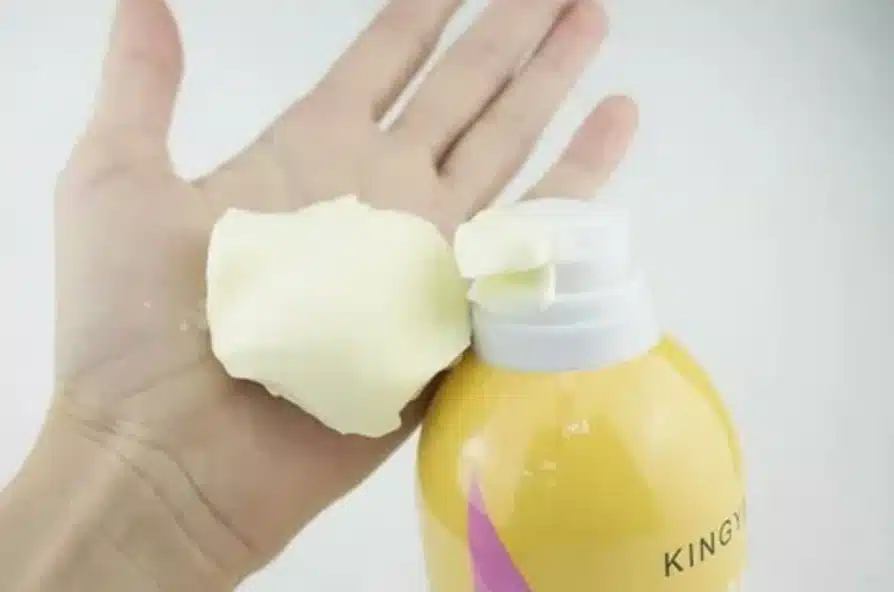
Wofür wird Bademousse verwendet?
Haben Sie sich jemals gefragt, wofür Badeschaum verwendet wird und wie er Ihre Duschroutine aufwerten kann?
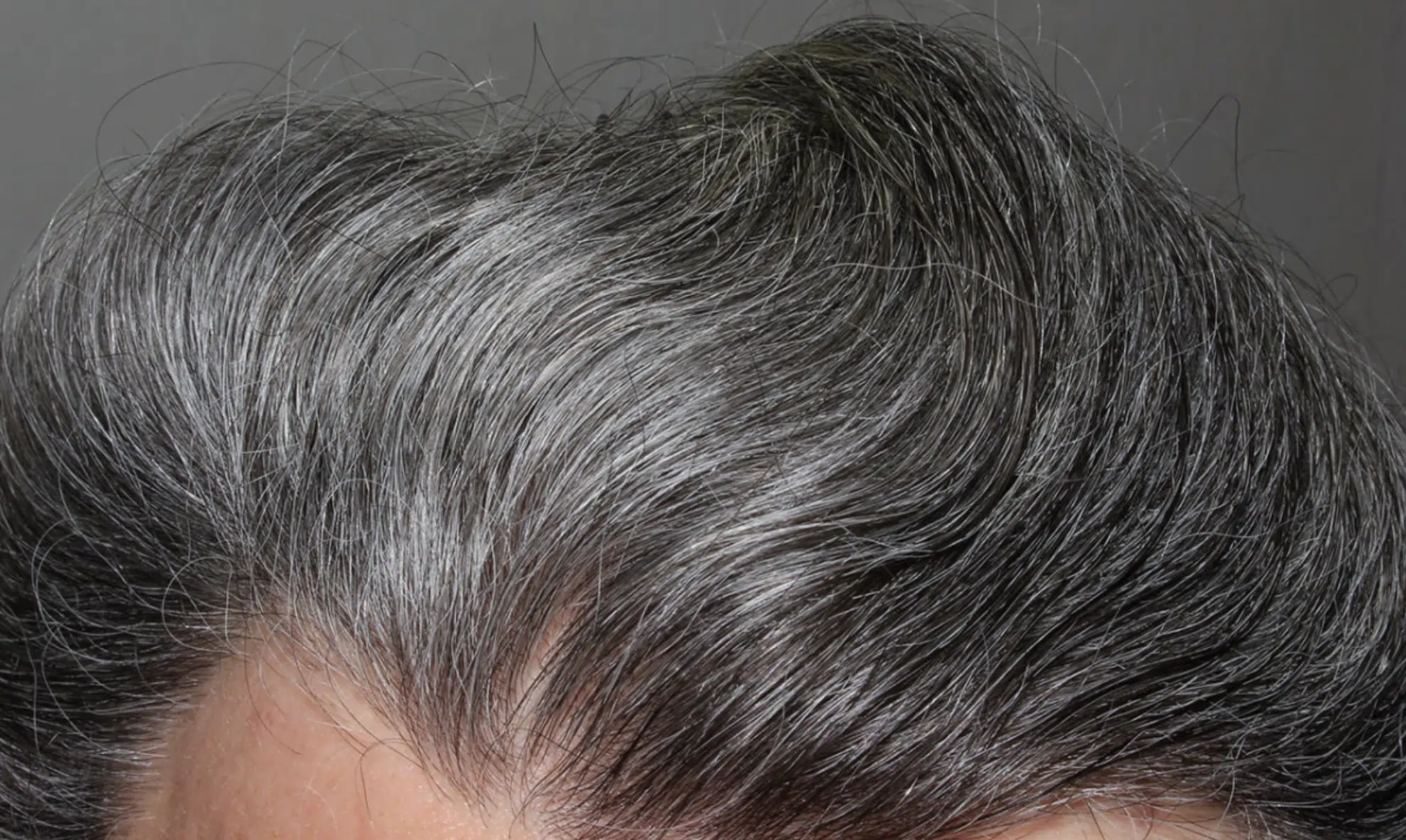
Wie deckt man graues Haar ohne Färben ab?
Wenn Sie die ersten grauen Strähnen entdecken, müssen Sie sich nicht auf regelmäßige Friseurbesuche oder aggressive chemische Färbemittel festlegen.
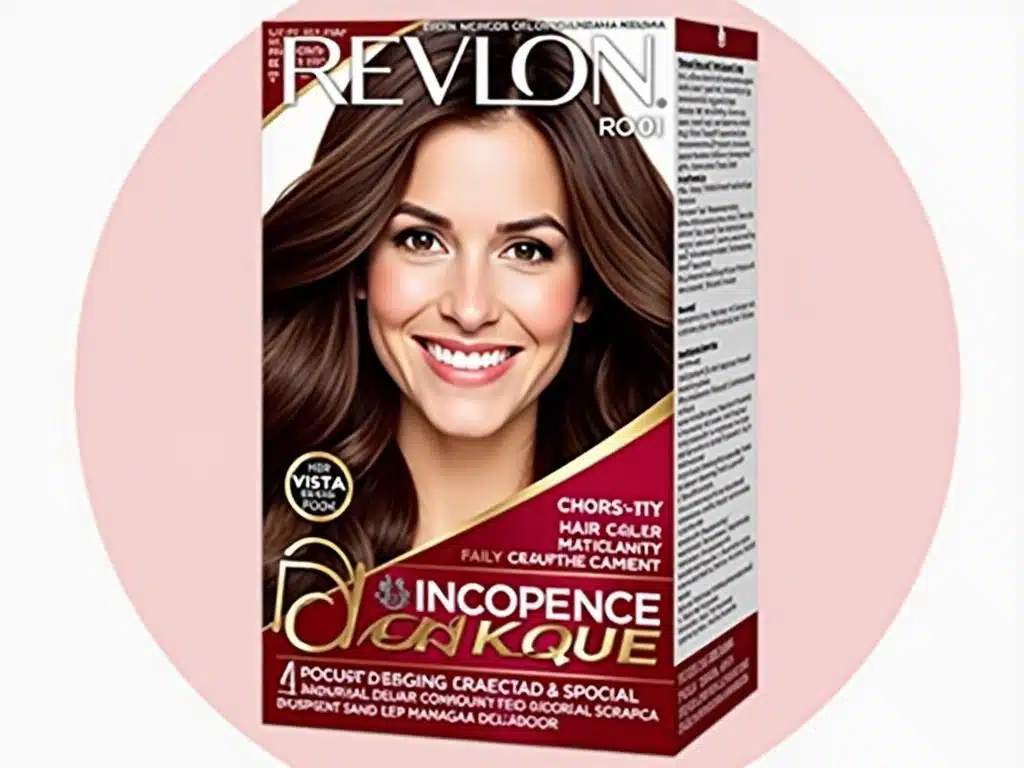
Wer ist der Hersteller von Revlon Hair Color?
Der Name Revlon ist ein Synonym für die Kosmetikindustrie.
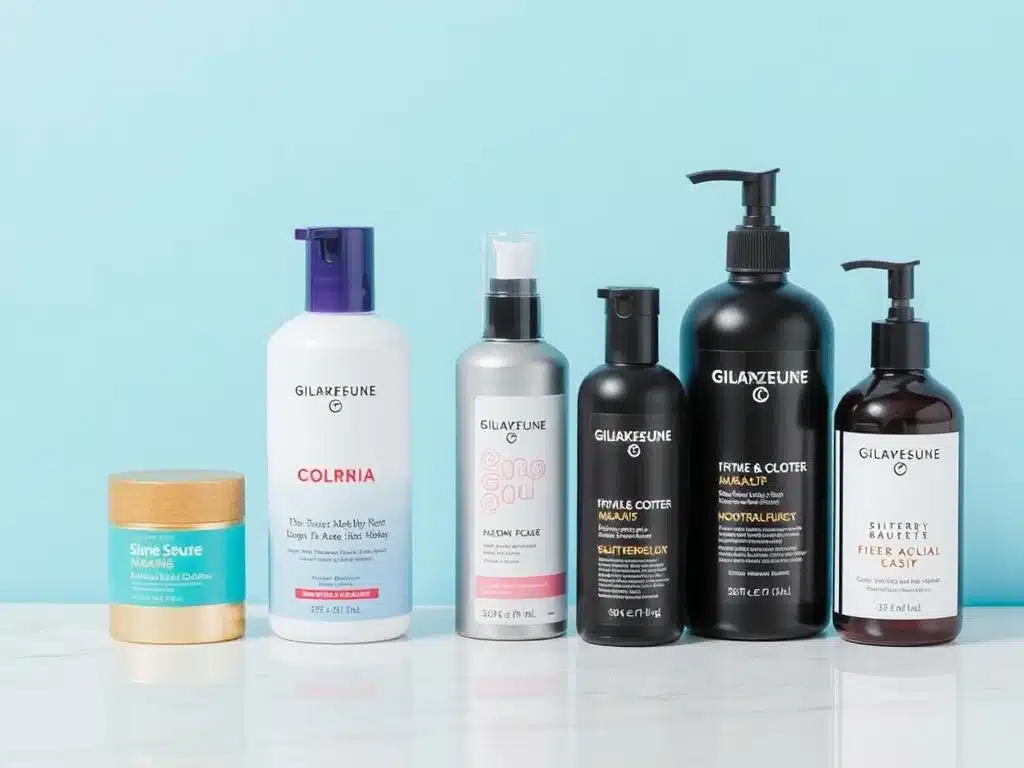
Was ist die beste Haarpflegemarke?
Die Wahl der richtigen Haarpflegemarke kann bei der Vielzahl der verfügbaren Optionen überwältigend sein.

Was sind umweltfreundliche Kosmetika?
Die Schönheitsindustrie befindet sich im Wandel: Immer mehr Verbraucher suchen nach nachhaltigen und umweltfreundlichen Optionen.
- +86 151 1839 7303
- [email protected]
- Mo-So 07:00-23:00
Tags
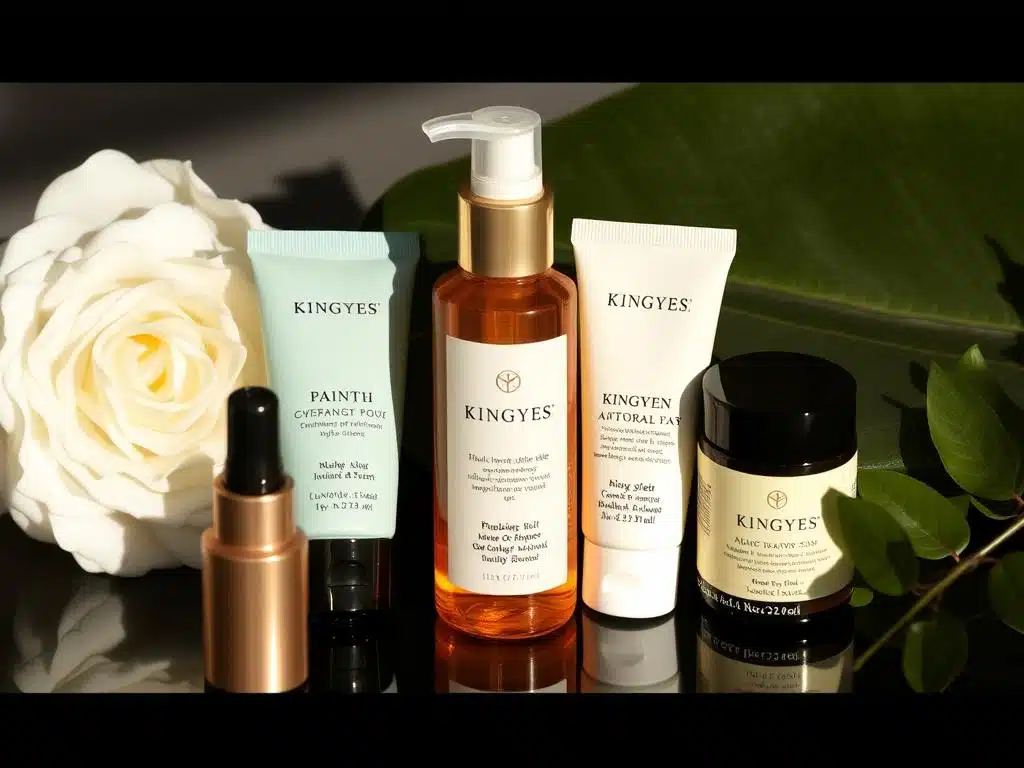
Wie verkauft man Kosmetika auf WeChat?
Sind Sie bereit, den größten Schönheitsmarkt der Welt zu erschließen?

Wie verkauft man Kosmetik auf Shopee?
Sie möchten Kosmetika verkaufen und den boomenden E-Commerce-Markt in Südostasien erschließen?

Wie man mit Kosmetikfabriken zusammenarbeitet?
In der dynamischen und wettbewerbsintensiven Schönheitsindustrie ist die Zusammenarbeit mit dem richtigen Kosmetikhersteller von entscheidender Bedeutung für den Erfolg Ihres Kosmetikgeschäfts.

